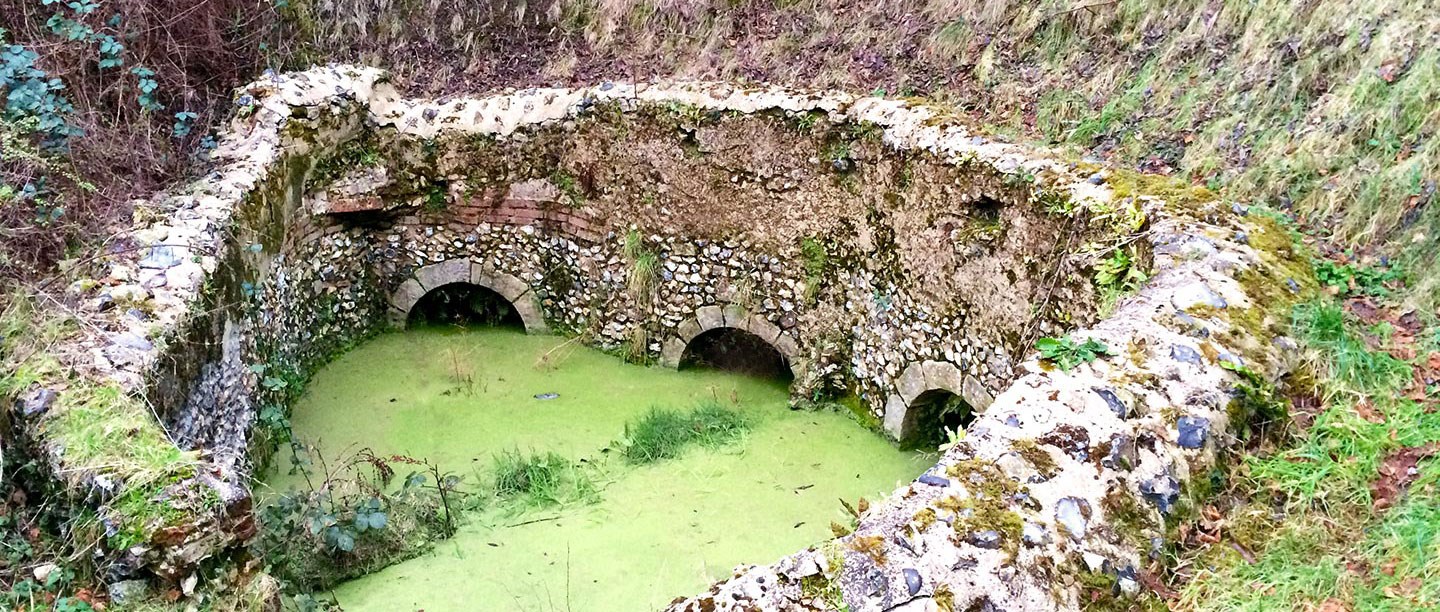Aquaduct
The above photo shows the conduit house at Canterbury Cathedral. It is part of the water supply of St Augustine and comprises a mid twelfth-century collecting and settling tank, now divided by an eighteenth-century wall. Four tunnelled openings and three smaller ducts, which collect water from springs, lead into the tank. Water was delivered from here to the abbey via lead pipes. This gives us some idea of what Ramsey Abbey would have constructed, to supply its much needed water supply for the Monks.
On three separate occasions between 1512 and 1521 an Aquaduct is mentioned in the Ramsey Abbey Employees list.
In 1512 John Emesley a labourer is paid 32d for 10 days work to dig around the Aquaduct.
In 1521 William Gardiner is paid 16d for 10 days labouring around the Aquaduct.
In 1521 William Gardiner is paid 23d for repairing the house of the Aquaduct.
The mention of an Aquaduct House tells us that a water system had been built to supply Ramsey Abbey with running water, the Aquaduct house mentioned was probably a cistern built so water could be stored and would give pressure in the system to push the water to different parts of the Abbey. Water was an essential need for the Abbey, for the Kitchens, washing and cleaning, the Lavatorium where the Monks would have washed their hands before meals and of course the Reredorter system for toilets. In its heyday the Abbey was home to 80 Monks and hundreds of workers, so a good water supply was needed.
Looking at the Ramsey Aquaduct house mentioned, it is reasonable to assume that it had to be fed by a source of springs on the island. This idea is supported by looking at the well at the Ramsey Rural Museum. The well was found in the 1980s by Museum staff, it was completely hidden and doesn’t appear on any of the estate maps. It is 26ft deep 10ft across and has a constant depth of water of 16ft, so it’s possible that there would have been a number of these wells feeding the Abbey water system.

